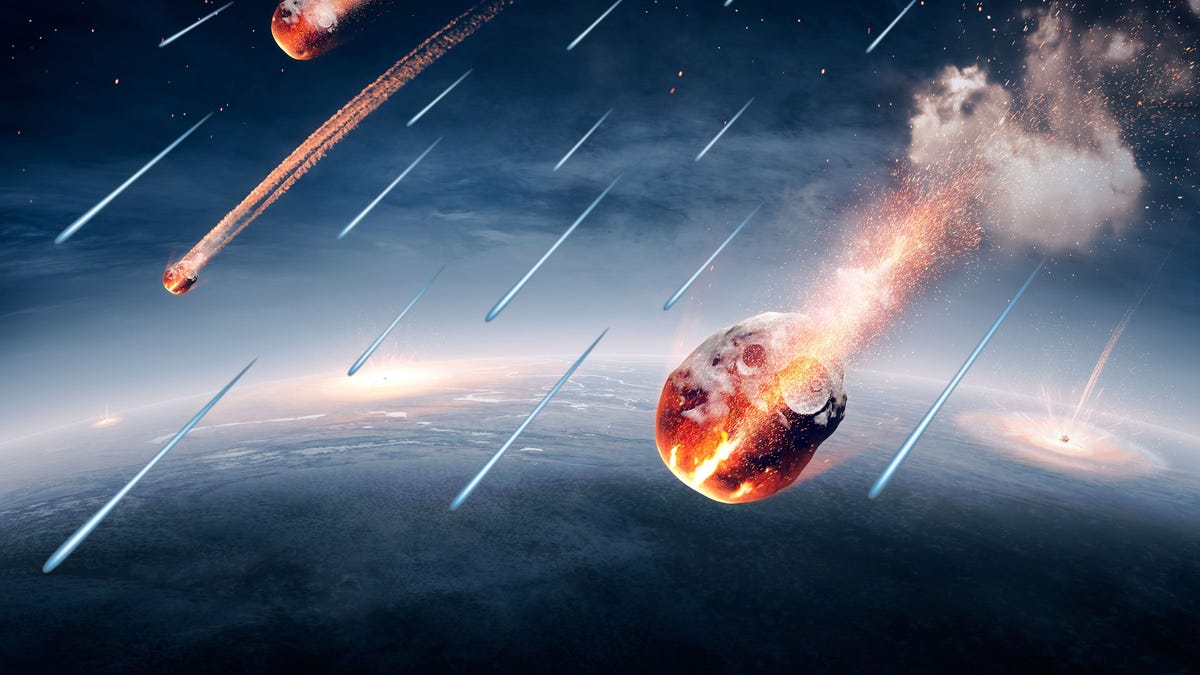'Missing reservoir' of Earth's water may have originated from the sun
A cosmic water factory could've helped create our beloved oceans.

Water could've risen from flames.
Five billion years ago, the universe was Earth-less. It remained that way till a vast number of asteroids smashed together and compacted into a giant rocky orb. But that raises a question: The Earth's surface is 70% water, so where'd the liquid come from?
A long-standing theory is that a water-rich class of asteroids, called carbonaceous or C-type asteroids, could've pelted the Earth during its creation and brought along water. There's a caveat though, and the C-type asteroids may be only half the story.
The water composition of those asteroids is slightly different than what we find in H2O on Earth. It has more deuterium, which is a heavier version of hydrogen. But if all Earth's water came from those asteroids, its makeup would be similar, right? An international band of scientists might've solved the puzzle. What's a cosmic object with lots of hydrogen but not so much deuterium? The sun.
The researchers argue that if the sun's solar wind -- a periodic ejection of charged hydrogen and helium ions -- came into contact with asteroids, or even asteroid dust, the wind's hydrogen ions would've interacted with oxygen atoms in the rock particles, thereby generating H2O.
After scrutinizing samples of asteroid Itokawa brought back in 2010 by the Japanese space agency's Hayabusa space probe, the team confirmed the sun as a likely contributor to Earth's expansive water content. They published a paper on their findings Monday in the journal Nature Astronomy.
A visualization of solar wind creating water on asteroid dust particles.
"Fine-grained dust, buffeted by the solar wind and drawn into the forming Earth billions of years ago could be the source of the missing reservoir of the planet's water," the paper's lead author, Luke Daly of the University of Glasgow's School of Geographical and Earth Sciences, said in a statement.
Earth's water chronicle could go beyond space asteroids slamming into the land and bringing water with them. That bit might've been accompanied by a water factory of sorts suspended in space as solar wind gently brushed the dust particles descending on our planet.
The combination of the deuterium-heavy water induced by asteroids alone and the hydrogen-heavy water from the interaction of solar wind and dust particles better accounts for the chemical makeup of water found on Earth.
"We calculated that around a 50:50 mix of water-rich dust and asteroids would be a perfect match for the isotopic composition of Earth's water," the team wrote in a recent explanation of its paper.
Atom by atom, inch by inch
To arrive at these conclusions, the researchers used a method called atom probe tomography to study samples of the near-Earth asteroid Itokawa. They wanted to see if Itokawa was affected by the specific type of space-weathering needed to produce water from solar wind.
A cutting-edge tool used by engineers and physicists alike, atom probe tomography helps scientists understand the chemical composition of various materials. With this technique, something can be placed in a chamber and deconstructed atom by atom. After the item is entirely deconstructed, computers digitally reassemble a model of the object. This time, however, the structure is mapped with exact atom distribution.
To prove solar wind contributed to the genesis of Earth-based water, the team would need to detect hydroxide -- the by-product of the wind-particle chemical reaction -- and possibly water on the Itokawa samples. They found both.
An close look at Itokawa's sample.
"Atom probe tomography lets us take an incredibly detailed look inside the first 50 nanometres or so of the surface of dust grains on Itokawa, which orbits the sun in 18-month cycles," paper co-author Phil Bland, a John Curtin distinguished professor at the School of Earth and Planetary Sciences at Curtin University, said in a statement.
"It allowed us to see that this fragment of space-weathered rim contained enough water that, if we scaled it up, would amount to about 20 litres for every cubic metre of rock." And interestingly, it's not just Earth that could've been affected by the water delivery system.
"We think it's reasonable to assume that the same space weathering process which created the water on Itokawa will have occurred to one degree or another on many airless worlds like the Moon or the asteroid Vesta," Hope Ishii of the University of Hawai'i at Mānoa said in a statement.
"That could mean that space explorers may well be able to process fresh supplies of water straight from the dust on the planet's surface," Ishii added. "It's exciting to think that the processes which formed the planets could help to support human life as we reach out beyond Earth."

